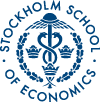No 642: (M)oral Hazard?
Erik Grönqvist ()
Additional contact information
Erik Grönqvist: Dept. of Economics, Stockholm School of Economics, Postal: Stockholm School of Economics, P.O. Box 6501, SE-113 83 Stockholm, Sweden
Abstract: Would you go to the dentist more often if it were free? Observational data is here used to analyze the impact of full-coverage insurance on dental care utilization using different identification strategies. The challenge of assessing the bite of moral hazard without an experimental study design is to separate it from adverse selection, as agents act on private and generally unobservable information. By utilizing a quasi-experimental feature of the insurance scheme the moral hazard effect is identified on observables, and by having access to an instrument the effect is identified with IV. Moral hazard is assessed using both difference-in-differences and cross-sectional estimations.
Keywords: Asymmetric information; Moral Hazard; Health Insurance; Porpensity Score Matching; IV
51 pages, November 28, 2006
Full text files
hastef0642.pdfFull text
Questions (including download problems) about the papers in this series should be directed to Helena Lundin ()
Report other problems with accessing this service to Sune Karlsson ().
RePEc:hhs:hastef:0642This page generated on 2024-09-13 22:19:41.

